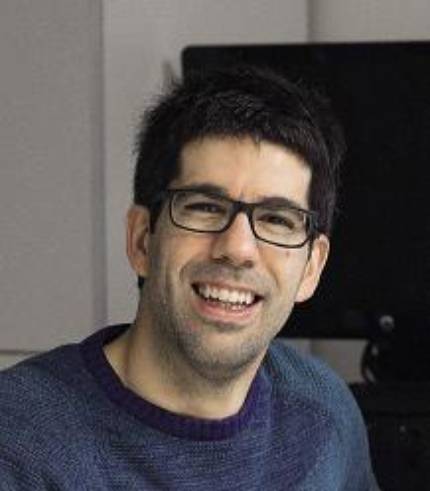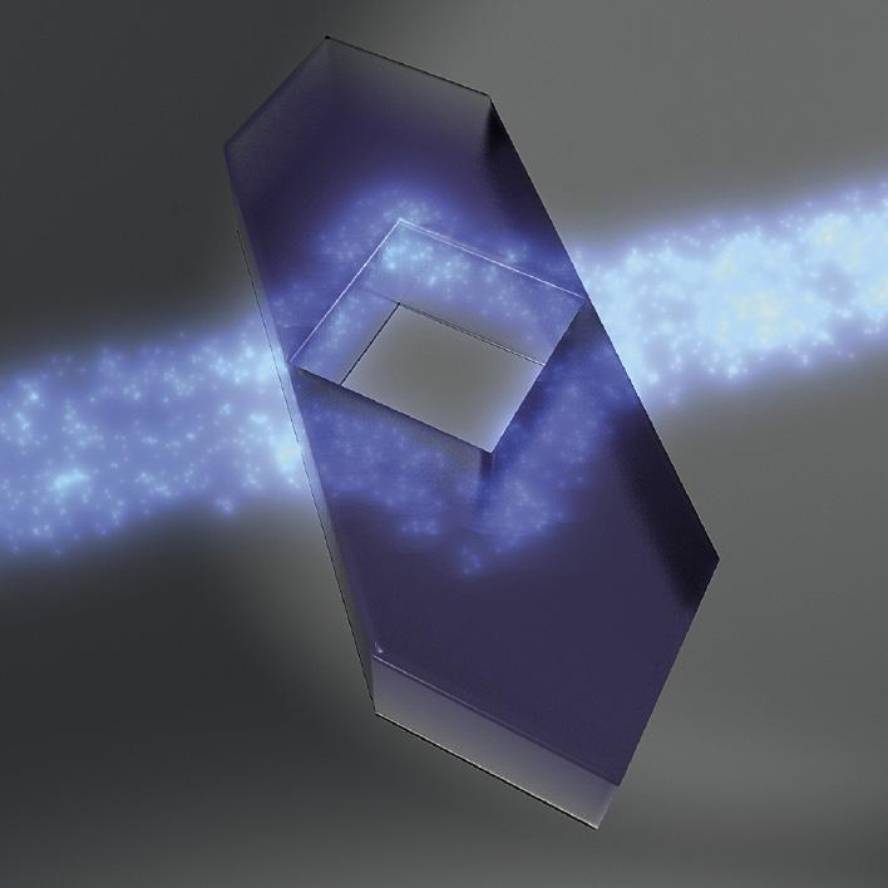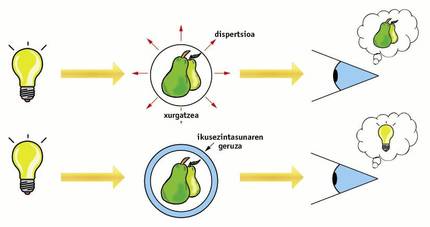Looking for the key to invisibility
Miguel Beruete Díaz is a researcher at the Public University of Navarra (UPNA) and has recently worked in diffusing media with researchers from his laboratory and the Polytechnic University of Valencia. It seems that they have succeeded with the path, since in these environments they have invented a layer to invisible objects. The result has been published in the American journal Physical Review A.
Beruete explains that they have been based on Pendry type invisibility or transformation optics: “It consists in finding coordinates so that the light goes in the direction we want instead of going straight. How do you get it? Using metamaterials that redirect light as we want. These materials are not in nature, our job is to design them. Thanks to them, light, instead of sounding in the object, surrounds it and becomes invisible to us.”
The road to reach him has been long. “The first designed layer, that of Pendry, was conceived for common environments: air, water… in which the waves propagate according to the equation of the waves and the light goes in a straight line. However, there are other means in which light does not work. They are called diffusing media and an example is fog. In the fog there are small particles of water that disperse when beaten. In such environments, the Pendry layer doesn’t work.”
Media and light pulses
According to Beruete, in Germany there is a group, the Karlsruhe Institute of Technology, which has worked a lot in diffusing environments. Martin Wegener is the director of this group and his work has focused on his research. “We’ve refined Wegener’s invisibility layer.” Thus, they have improved the Wegener layer to work even with switched or pulsed light.

“He is interested from a technological point of view because the radars, for example, are pulses of light; and if I want to do something invisible, maybe I want to get it in that type of light,” he said.
In fact, they have been based on the same technique as Pendry: “Our work is through simulations. In the simulations we obtained a material with certain diffusion coefficients that channels the light as we want. Thanks to this, the object under it becomes invisible. That is, the designed metamaterial conducts the light to surround the object and so it does not look.”
The material developed can have multiple applications, including biomedical applications, since biological tissues can be considered media of diffusion. These biomedical applications are the most attractive for Beruete: “For example, it could be used for the implant coating, preventing the implant from hiding the tissues behind it.” Beruete recognizes that such applications are far from real, but would like to go that way.
Looking for the carpet or carpet of invisibility
However, he explores with his companions another path: the carpet of invisibility. His father, like the other, is Pendry. He explains the basis of his work: “Imagine a flat surface with a beak in a certain place. The goal is not to see this summit, the entire surface is flat. Thus, the object you put inside the top becomes invisible.”
He explains that when Pendry proposed this carpet, he proposed to use the transformation optics, that is, to channel the light to surround the top and thus become invisible. Subsequently, however, metaphors have been proposed, plastic sheets with metallic elements that channel light but not the envelope, but on the skin itself.
As the UPNA have manufactured this type of metamaterial in the terahertzen band. Berueta confesses that in China another group had achieved the same thing a little before them, in the band of sight: “That has partly taken away the novelty, but we are pleased to have achieved it.”
Compared to the above, the technique of invisibility is totally different. It is based on holography: “We distinguish volumes based on the time it takes for light to look. The metamaterial we have created is based on that to deceive the detector: the metamaterial is on the surface and the metamaterial behaves as if the light hits on the surface below. It’s like giving a fictional depth, as holography does.”
According to Beruete, the biggest advantage of this invisibility carpet is that it is extremely thin. In addition, they have not only achieved it in simulations but have done it experimentally. And the terahertz band is increasingly interested, as so far it could not be detected and created correctly, so it can bring many new things: “It is the last unexplored zone”, for example, believes that on this path may come new methods of identifying biomolecules: “We work on biomedical and agro-food applications because we believe it has great potential.”







